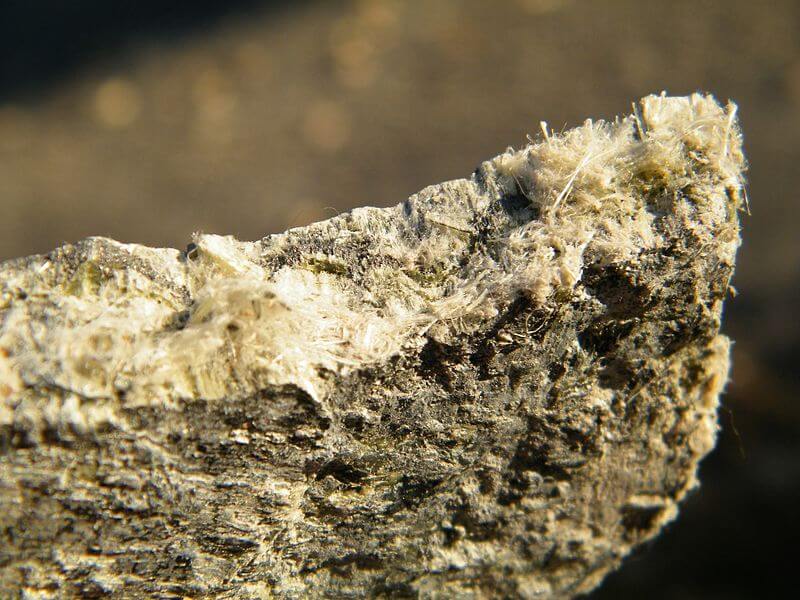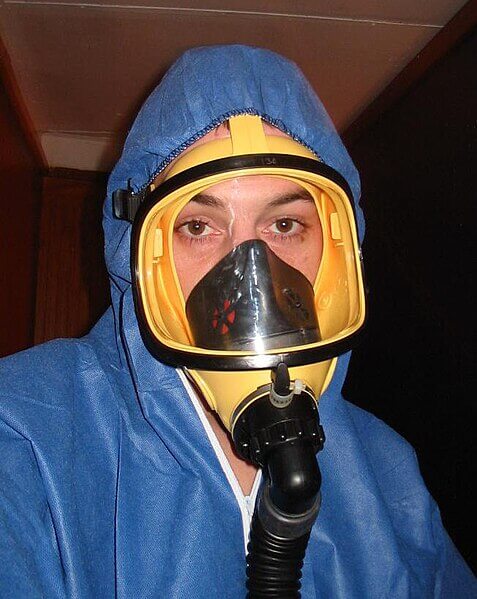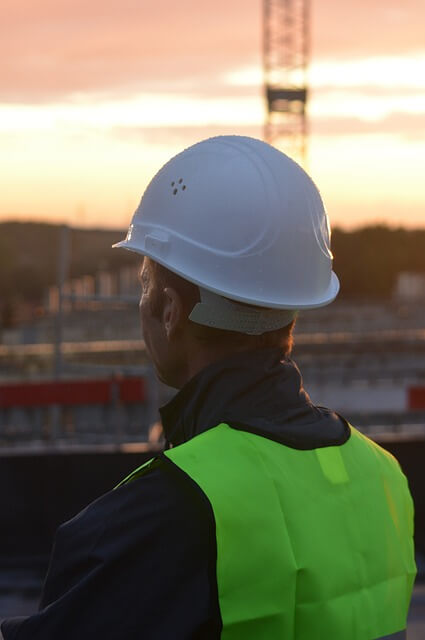Asbestos in Construction in the UK: Unveiling the Hidden Dangers
Last Updated on 19 December 2023
In the world of construction, where progress and safety are of utmost importance, there exists a number of hidden and dangerous enemies – asbestos being the most significant. The United Kingdom is known for its impressive architectural heritage, and consequently, numerous technical construction projects.
However, there is a pressing issue that needs to be addressed – the management of asbestos. It is crucial to prioritise the safety of workers whilst also preserving the integrity of the country’s built environment.
This article explores the intricate aspects of asbestos in construction within the UK. It provides insights into its historical background, associated risks, existing regulations, and recommended safe handling methods.
Understanding Asbestos in Construction: A Historical Overview
During the 20th century, asbestos became widely used in construction due to its fire-resistant properties and versatility, which were once highly regarded. It has been used in numerous structures, ranging from insulation to roofing materials. However, due to the growing discovery of its significant health hazards, such as lung diseases and cancer, the use of this material in new construction projects was prohibited in the UK in 1999.
Identifying Asbestos: Types and Locations
There are three main different types of asbestos, namely chrysotile, amosite, and crocidolite. Each type has its own unique characteristics and potential dangers. Roofing, flooring, and insulation were common uses for these materials. It is important to note that buildings constructed prior to the year 2000 have a higher likelihood of containing asbestos, particularly in older properties and industrial structures built prior to 1985.
The identification of asbestos is crucial in order to minimise exposure risks. Consequently, certified professionals use various techniques, including visual inspections and laboratory analysis, to determine the presence of asbestos containing materials (ACMs). Adequate identification guides efficient treatment and removal processes where appropriate.

Chrysotile asbestos in its raw form
The Looming Hazards: Health Implications
Exposure to asbestos fibres can have severe or fatal consequences on human health. Breathing in these tiny fibres can cause serious illnesses, such as mesothelioma, asbestosis, and lung cancer, which can be fatal. Construction, renovation, and demolition workers are especially vulnerable to exposure. As a result, appropriate training, protective gear (PPE), and adherence to regulations are crucial for worker safety.
Regulatory Measures: Controlling Asbestos
In order to address the potential dangers and protect workers and the general public from asbestos-related hazards, the UK government has implemented strict regulations that oversee the management and removal of asbestos. The Control of Asbestos Regulations 2012 provides a set of guidelines that outline how to assess, manage, and work with materials that contain asbestos. This framework requires duty holders to identify asbestos, evaluate its condition, and implement control measures.
Asbestos Management Plans: Managing Asbestos in Buildings
Asbestos management plans are vital tools prior to and during construction projects involving potential asbestos exposure. Specifically, these plans outline how to handle ACMs safely, conduct risk assessments, and communicate information to workers and stakeholders.
Asbestos Awareness: Training and Education
It is crucial to provide construction workers, architects, and property owners with valuable information about asbestos in order to empower them. Therefore, regular training and awareness programmes play a crucial role in helping individuals make informed decisions and effectively implement preventive measures.
Safe Handling Practices: Mitigating Risks
Specialised skills and protective equipment are required for the safe handling and removal of asbestos. As a result, professionals are required to undergo extensive training in order to effectively carry out tasks such as encapsulation, removal, and disposal. Additionally, It is crucial to take proper precautions to ensure that fibres do not become airborne and put workers and occupants at risk.
Licensed asbestos removal contractors adhere to strict guidelines for containment, removal, and disposal. Failure to comply can lead to severe health consequences and legal ramifications.

Asbestos removal operative wearing face mask & PPE
Asbestos in Construction: Renovation and Demolition
When it comes to renovation and demolition activities, there is an increased risk of asbestos exposure. This is because when materials are disturbed, they can release asbestos fibres into the air. Therefore, In order to ensure the safe execution of such projects, it’s important for workers to recognise asbestos containing materials (ACMs) and their potential hazards. In addition, it’s essential to conduct prior refurbishment/demolition asbestos surveys, engage in thorough planning and hire licensed or appropriately trained contractors.
Asbestos Air Monitoring: Ensuring Clean Air
Following licensed asbestos removal, air monitoring is legally required to verify that the area is safe to re-occupy. Air quality tests and visual inspections are conducted to provide confidence that the environment is safe for reoccupation.
Asbestos in Construction: Future Challenges and Solutions
Even though there is a ban on using asbestos in the UK, the country is still dealing with the challenge of managing existing structures that contain this dangerous substance. Comprehensive removal is costly and demands careful consideration. However, moving forwards, there is hope in the development of new technologies for detecting asbestos and finding more environmentally friendly ways to remove it.

Conclusion – Asbestos in Construction
In conclusion, once celebrated for its qualities, asbestos now serves as a stark reminder of the unforeseen repercussions that can arise from unregulated advancement. Successfully addressing the challenges it presents necessitates a collective effort involving regulatory bodies, construction professionals, and the general public.
Asbestos in construction in the UK remains a critical concern due to its potential health risks. Therefore, by understanding the historical use, risks, regulations, and safe removal practices, construction professionals can ensure the safety of workers, occupants, and the environment.
Furthermore, staying informed and following best practices are essential steps towards a construction industry that prioritises health and safety. If you need advice around construction and planning work safely, then Havio can assist.
FAQs – Asbestos in Construction
Q: Is all asbestos considered dangerous?
A: Yes, if asbestos is inhaled as airborne fibres, it can pose significant health risks regardless of its form.
Q: Can I identify asbestos myself?
A: It’s not recommended. Specialised training and equipment are necessary for proper identification.
Q: What should I do if I suspect asbestos in my property?
A: Firstly, consult professionals for an asbestos survey. They will thoroughly assess the potential presence of asbestos in your surroundings and provide you with valuable recommendations based on their findings. It is crucial to follow their guidance to ensure the safety and well-being of everyone involved.
Q: Is it necessary to remove asbestos in older buildings?
A: No, that’s not always the case. It’s only when materials become damaged or deteriorate that it becomes necessary to remove them. In some cases, repair and encapsulation may also be an option.
Q: Are there any safe alternatives to asbestos that can be used for construction purposes?
A: Yes, as awareness of asbestos risks grows, the demand for safer alternatives increases. Various modern materials can replicate asbestos’s properties without the health hazards. Therefore, exploring these alternatives fosters a safer construction environment.
Need asbestos advice?
We hope you found our article both useful and informative. If you need any help or advice at all with any aspect of asbestos then we’ll be very happy to assist you. Give us a call and our experts will give you some advice and guidance on whatever if is you’re concerned about.
Please contact us on 0800 141 2676, email us at info@rbasbestos.co.uk or fill in the form below.
Our professional asbestos surveyors conduct asbestos inspections and asbestos surveys every day across the UK on all types of properties, both residential and commercial, for private home owners and commercial property Managers and owners. So when it comes to managing asbestos in your property, you’re in very safe hands with RB Asbestos Consultants.

